‘Nothing can be accomplished without solitude,’ said Picasso, and in fact several of my artist friends have reported bursts of creativity under lockdown. But that’s no consolation to audiences locked out of galleries. With them in mind BBC Arts has commissioned Museums in Quarantine, a series of 30-minute films for BBC Four sneaking viewers into darkened galleries for stolen glimpses of closed exhibitions and mothballed collections.
There are guided tours of ‘Andy Warhol’ at Tate Modern, ‘Young Rembrandt’ at the Ashmolean Museum in Oxford and highlights of the permanent collections at Tate Britain and the British Museum (I was able to watch the first three). But only our guide to ‘Warhol’, Alistair Sooke, is physically present, having gained entry to the Tate before full lockdown.
‘Another Warhol exhibition. Really? Do we need one?’ Sooke starts off by asking before taking us through what appears to be, really, another Warhol exhibition. The pre-publicity for this show promised a rare personal insight into ‘a shy, gay man from a religious, migrant, low-income household’, considering ‘the strong religious conviction of Julia Warhola, Andy’s mother with whom he lived for most of his life […] as a significant context to his work’. Sooke, though, sets out to prove Warhol’s contemporary relevance, emphasising how his ‘obsession with consumerism, rampant celebrity worship’ and so on made him ‘an artist as eerily in tune with our times as his own’. He points out that Sleep (1964), Warhol’s five-hour-long film of John Giorno sleeping predated Big Brother by 36 years, while the show’s curator Gregor Muir assures us that the artist ‘would absolutely understand the Kardashians’.

Sixty Last Suppers (1986), Andy Warhol. © 2020 The Andy Warhol Foundation for the Visual Arts, Inc./Licensed by DACS, London
We’re shown a passport photo of Warhol’s 28-year-old mother in 1920, looking like the archetypal Eastern European migrant in a headscarf, but not the touchingly intimate film he made in 1970 of the elderly Julia Warhola, still inseparable from the headscarf, in bed. And in the chapel-like gloom of the final room the monumental Sixty Last Suppers (1986), painted the year before Warhol’s death, is set in the context of the AIDS epidemic with no mention of the fact that a reproduction of Leonardo’s original hung in the Warhola family kitchen in Pittsburgh. (Although Sooke does note that there are many possible readings of this and other works – and suggests that this openness to interpretation is ‘part of Warhol’s secret’.)
Simon Schama, our guide to ‘Young Rembrandt’, feels no need to justify another Rembrandt exhibition and sidesteps the novel feature of this show – its focus on the fumbling early years in Leiden and the hard graft that turned a slow starter into a genius – to home in on the artist’s gift of empathy. ‘No artist better understood the fragile nature of human happiness,’ Schama says, reminding us that Rembrandt lost his common-law wife Hendrickje Stoffels, and possibly also his son Titus, to the plague. He passes swiftly over the crude workmanship of the youthful Spectacles Seller (1624–25) and makes no mention of Let the Little Children Come to Me (c. 1627–28) – a recent discovery still in mid-restoration that is a centrepiece of the display – choosing instead to focus on Rembrandt’s ‘astonishing abilities’. It is assumed, perhaps, that in our present predicament audiences would prefer the comfortingly familiar to the critical.
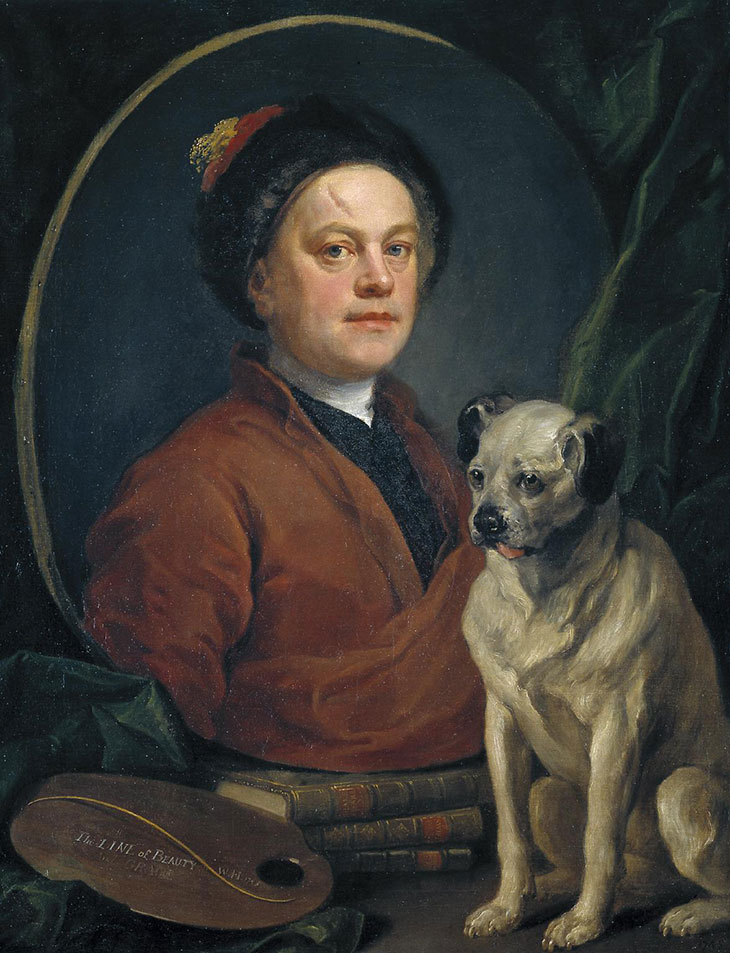
The Painter and his Pug (1745), William Hogarth. Tate Britain, London. Photo: © Tate (CC-BY-NC-ND 3.0)
The consolations of art are also a theme of James Fox’s tour of Tate Britain, which starts off with a quote from W.H. Auden: ‘About suffering they were never wrong, / the Old Masters’. But Fox’s selected works are mainly modern and contemporary, beginning with Francis Bacon’s triptych Figures at the Base of a Crucifixion (1944), which ‘reminds us that we all have an underlying condition, a human condition – we all inhabit fragile bodies and all of us decay and eventually die’. He compares this to wartime works by Paul Nash and John Piper, painted during ‘the last crisis to rattle this nation to its foundations’, before criss-crossing the galleries somewhat haphazardly. The tour takes in paintings including Richard Wilson’s elegiac Rome: St Peter’s and the Vatican from the Janiculum (c. 1753), George Stubbs’ idyllic Reapers (1785) and Howard Hodgkin’s playful R.B.K. (1969–70), as well as Susan Hiller’s room-sized installation Belshazzar’s Feast, the Writing on Your Wall (1983–84), before arriving at ‘for me the most bewitching image in the collection’, David Hockney’s A Bigger Splash (1967). Confused by this eclectic array? All of these works, says Fox, ‘are part of a bigger story of British art that many believe goes back to [one] man.’ Cut to a self-portrait by William Hogarth: The Painter and his Pug (1745). ‘That no-nonsense 18th-century Londoner’, we are told, ‘made ordinary things and ordinary people the subjects of fine art’. That this is also true of Warhol and Rembrandt suggests that art may be as much of a leveller as an epidemic.
TV programmes on art exhibitions need an angle, and it may differ from that intended by the curators. But while wall texts and artwork captions provide a background, one you can look away from if you wish, guided tours offer a single-point perspective. With its footage of darkened galleries and shuttered gift shops, ‘Museums in Quarantine’ is a moving reminder of what we’re missing, and of what it’s costing our galleries to remain closed. But it’s no substitute for the freedom to roam at will and the liberty to form our own impressions.
Museums in Quarantine is broadcast on BBC4. For more details visit the BBC’s website.
Unlimited access from just $16 every 3 months
Subscribe to get unlimited and exclusive access to the top art stories, interviews and exhibition reviews.

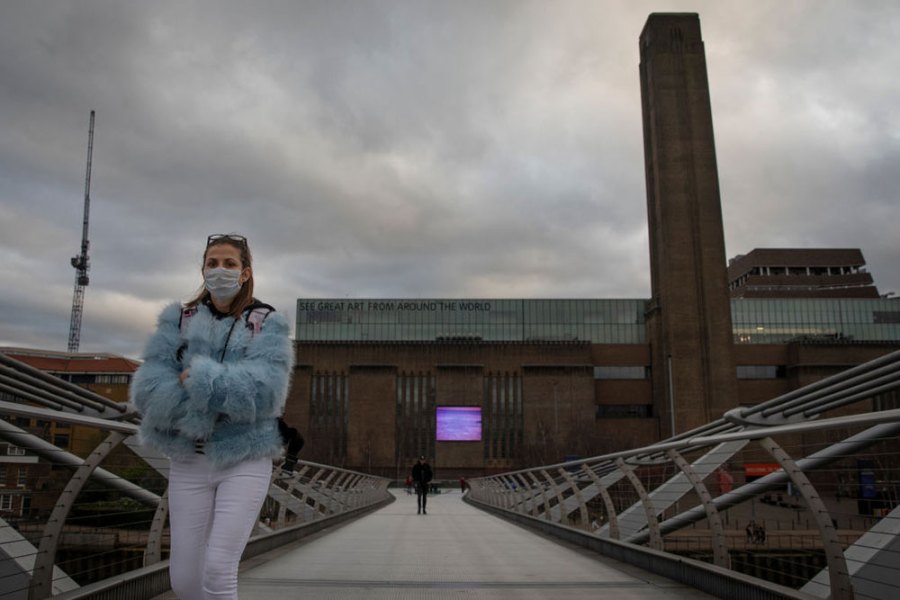
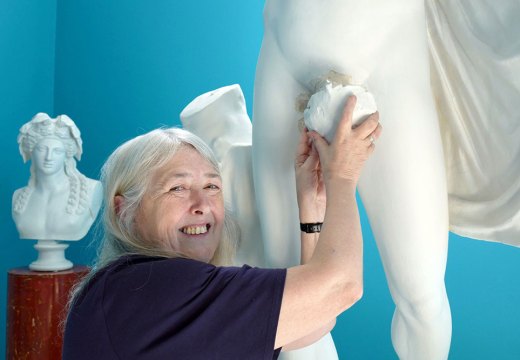
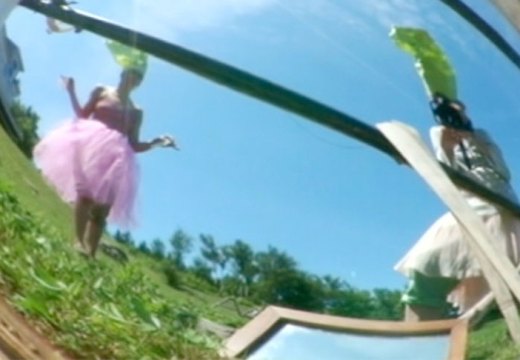
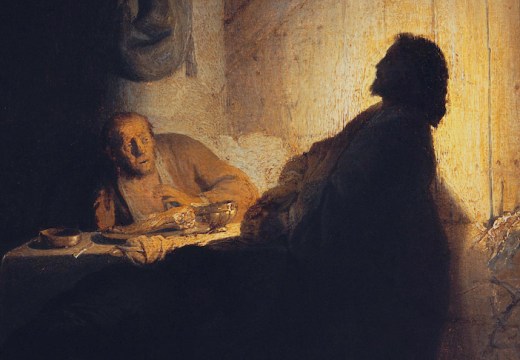









![Masterpiece [Re]discovery 2022. Photo: Ben Fisher Photography, courtesy of Masterpiece London](http://www.apollo-magazine.com/wp-content/uploads/2022/07/MPL2022_4263.jpg)
Has the Fitzwilliam lost the hang of things?